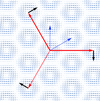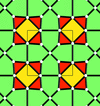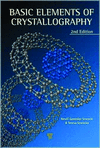issue contents
January 2017 issue

Cover illustration: An algorithm developed by H. T. Stokes & B. J. Campbell [Acta Cryst. (2017), A73, 4-13] promises to be a key tool for understanding the structure-property relationships of the many technologically important materials that display incommensurate modulations in their atomic and/or magnetic structure, as discussed by M. S. Senn [Acta Cryst. (2017), A73, 1-3]. A possible incommensurate modulation of CuO4 planes (Cu in blue, O in red) in a layered cuprate superconductor is shown.
advances
scientific commentaries

research papers
foundations
research papers
short communications
book reviews




 journal menu
journal menu
































